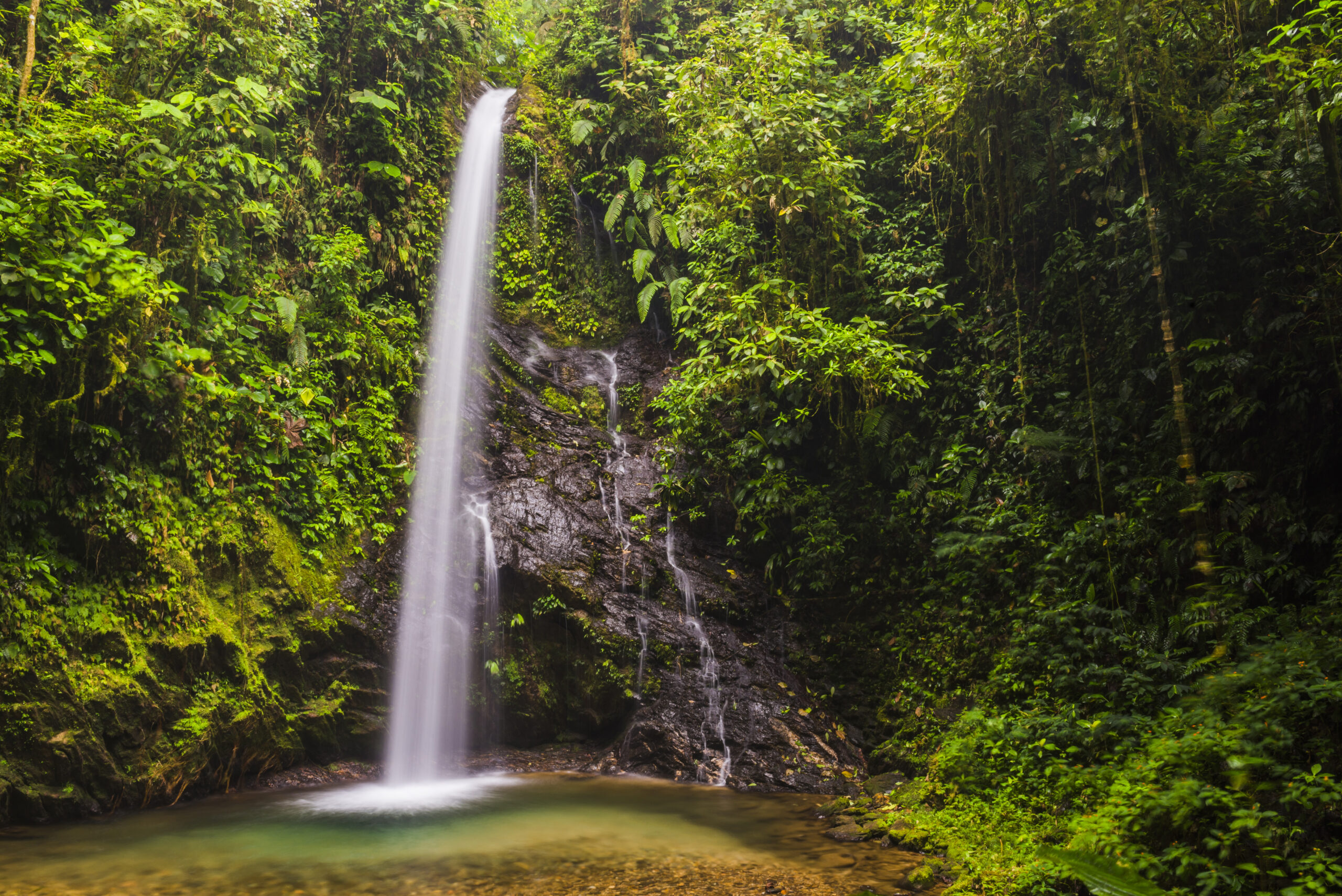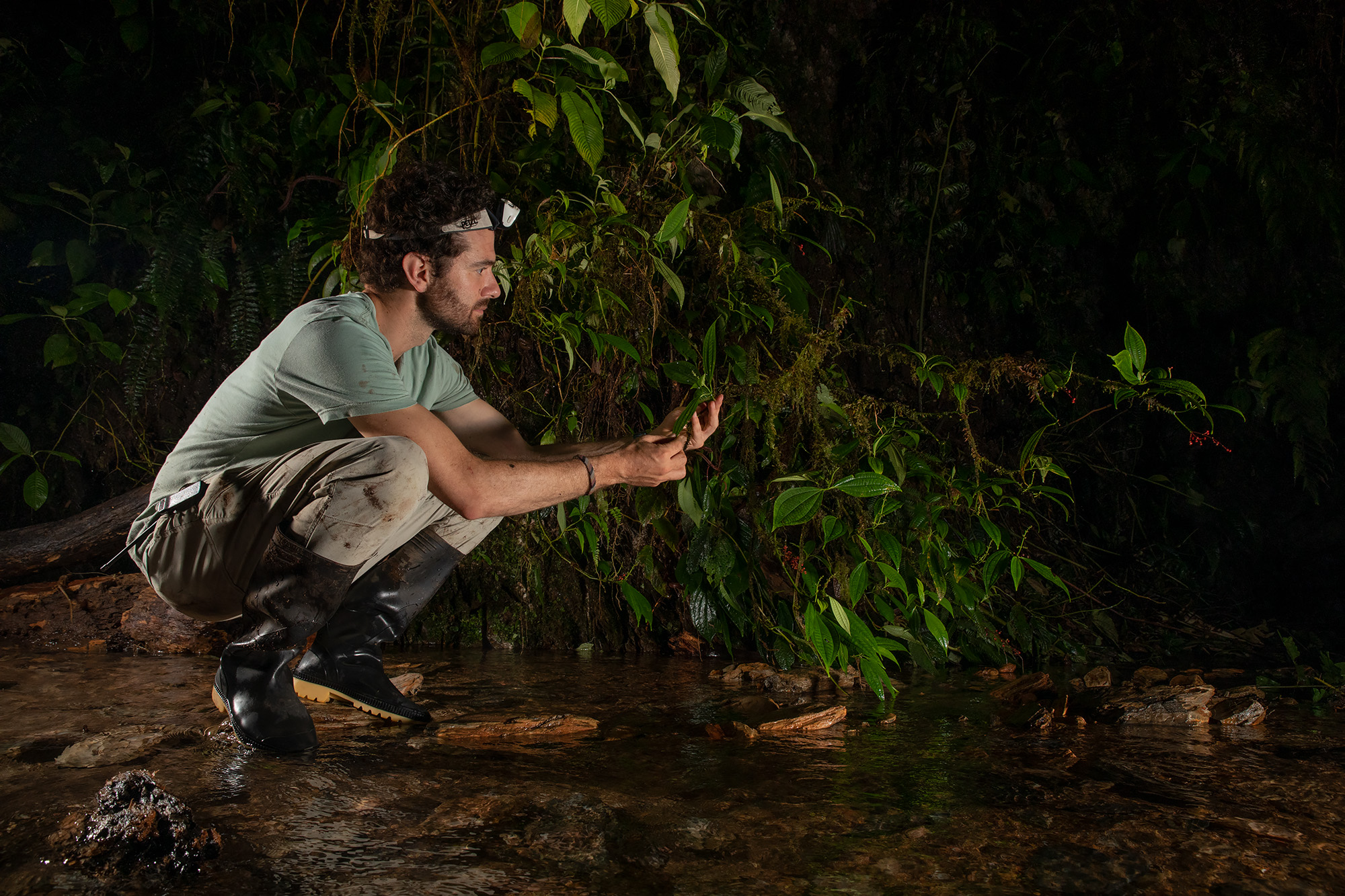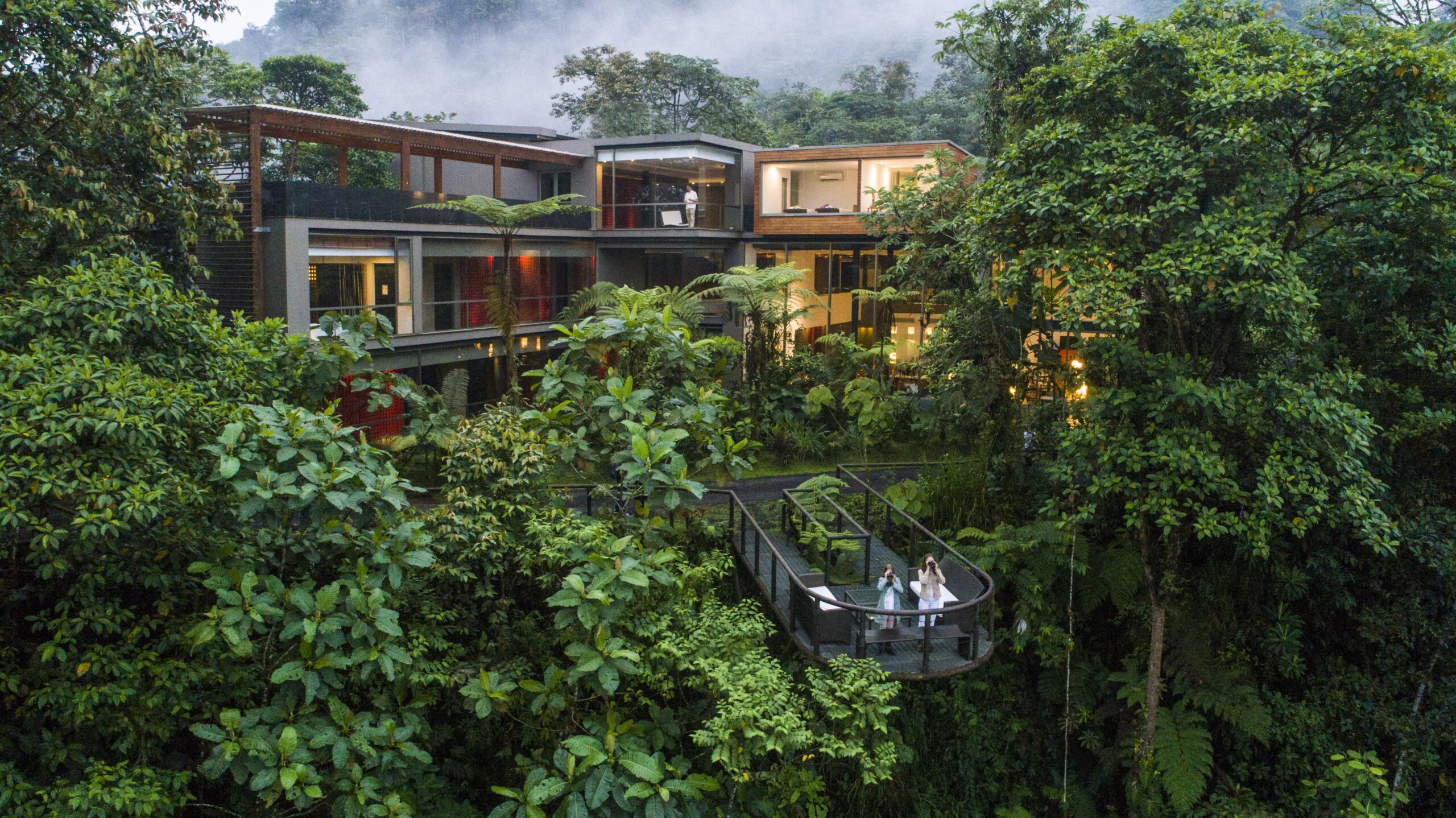Guests of Mashpi Lodge Help Finance
the Discovery of a Glass Frog,
a Species New to Science
Nine new species (and counting) described to science, as Mashpi Lodge in Ecuador connects travelers and scientists
Mashpi Lodge sits on an old logging site, with the laboratory of its research team located adjacent to the 24-room hotel. When Roque Sevilla first saw the property 13 years ago, he didn’t know it yet, but that spot would years later be the only one level enough to build a hotel to invite travelers to experience the natural wonders around it. Fast-forward to today: Sevilla’s dream to share this sliver of tropical forest with the world has materialized as a luxury hotel with a team of enthusiastic naturalists, resident researchers, and international scholars to work in the 2,500-hectare Mashpi Rainforest Biodiversity Reserve. Together, they continuously develop strategies and actions to guarantee the forest’s conservation, complemented by responsible tourism at the lodge.
Ecuador is one of the most megadiverse countries on the planet, boasting 20% more animal and plant species than the United States, a territory 35 times larger.

Ecuador Boasts 20% More Species than the United States
In the Mashpi Reserve alone, nine new species have been described for science since the lodge opened 10 years ago. The latest discovery, the Mashpi Glass Frog (Hyalinobatrachium mashpi), measures about 2 centimeters (3/4 of an inch) from snout to vent, the standard length of measurement of amphibians. Underneath, it shows the calling card of the glass frog: A completely transparent belly revealing a red heart, a textured white liver and digestive system, and, in females, a pouch of greenish eggs.
Other newly described stunning species for science include the Magnolia mashpi, Hyloscirtus mashpi and Lepanthes mashpica. (Yes, you get to put “Mashpi” in the Latin names to honor the region where the species has been discovered.)

Image by Lucas Bustamante
Research inspires and nurtures individual and institutional commitments to biodiversity. That’s why research has always been a fundamental pillar of Mashpi Lodge, which has a laboratory and six resident researchers (parabiologists), plus visiting scholars from around the globe. Travelers staying at the lodge directly contribute to the financing of these investigations, and they also return home as ambassadors for the globally important and beautiful ecosystem of Ecuador’s Chocó forest.
The work of researchers, both from the lodge and allied national and international institutions, allows the team to gain greater understanding of the forest. With and through this knowledge, Mashpi guides create an unparalleled experience for guests while simultaneously working to maintain a healthy ecosystem and a culture of lasting sustainability in the region.

Image by Carlos Morochz
A Native to the Region is Part of the Research Team
It takes curiosity, scientific rigor, commitment, and teamwork to describe a new species such as the Mashpi Glass Frog for science. In 2014, a team of researchers, including Carlos Morochz, then Director of Research and Biology at Mashpi Lodge, began a study to monitor amphibian diversity in the surrounding reserve. A year later Anderson Medina, a native of the neighboring Pachijal community joined the team. Anderson knows the reserve like the palm of his hand and become so involved in the scientific research that he co-authored the scientific paper describing Hyalinobatrachium mashpi. In December of that year, after a few hours tramping through and along the banks of the Amagusa River, the team’s flashlights illuminated the tiny body of an extremely transparent frog. They were unable to identify the creature with certainty, despite their extensive knowledge of inhabitants of the forest.
This was the first clue that it might be a new species. The intrigue and excitement of the sighting led to several more outings – at night, in the rain, for hours on end. After a year of monitoring, doubts about the species remained. Despite all the efforts of the researchers to collect as much data as possible about this elusive frog – which likes to hang out high in the trees around rivers – the evidence remained scarce. More studies were needed to find answers.

Carlos Morochz, researcher (Image by Lucas Bustamante)
The Frog’s Recorded Call Completed the Puzzle
Finally, in September 2019, the researchers managed to record the frog’s distinct call and complete the puzzle – almost five years after finding the first individual.
Click here to listen to the Mashpi Glass Frog!
With the field data complete and firm evidence to indicate a new species, morphological, acoustic, and molecular analyses were carried out. The research was made possible through the combined efforts of Mashpi Lodge, Fundación Futuro, Universidad San Francisco de Quito, University of California Berkeley, University of Bern, Photo Wildlife Tours, and Tropical Herping.
The discovery of this new species is important for the scientific community and for Ecuador. It shows the significance of articulated work between Mashpi Lodge’s Research and Biology team, academia, and local institutions, which, together, continue to add evidence about the importance of protecting the biodiversity and endemism of the Chocó forests. Research can also provide new opportunities for local young people to connect with their lands and generate livelihoods for themselves and their families.
Congratulations to the researchers for their scientific article published in the PeerJ journal: Juan M. Guayasamín, Rebecca M. Brunner, Anyelet Valencia-Aguilar, Daniela Franco-Mena, Eva Ringler, Anderson Medina Armijos, Carlos Morochz, Lucas Bustamante, Ross J. Maynard and Jaime Culebras.

Paulina Burbano de Lara, CEO of Metropolitan Touring (Image by Lucas Bustamante)
